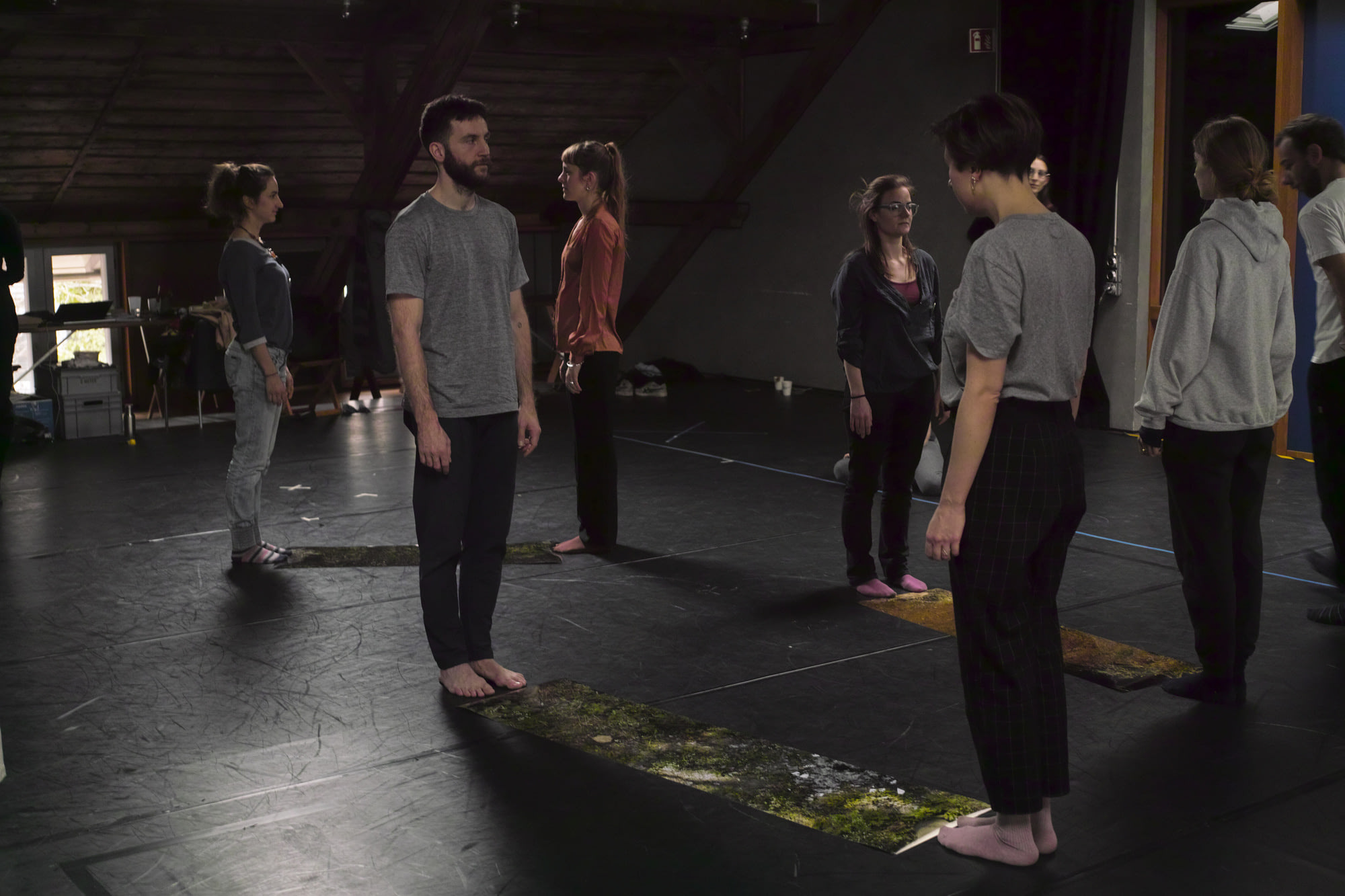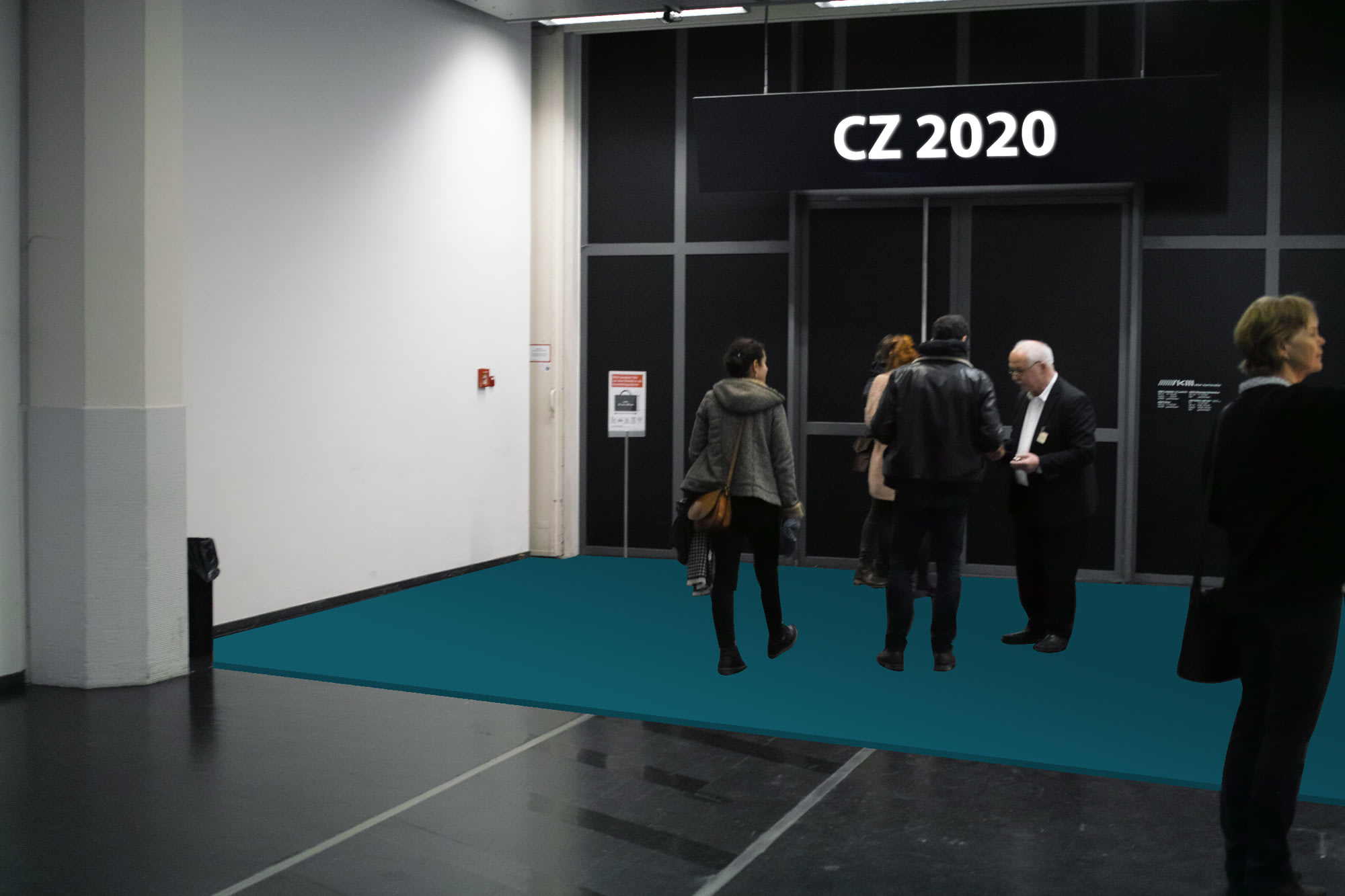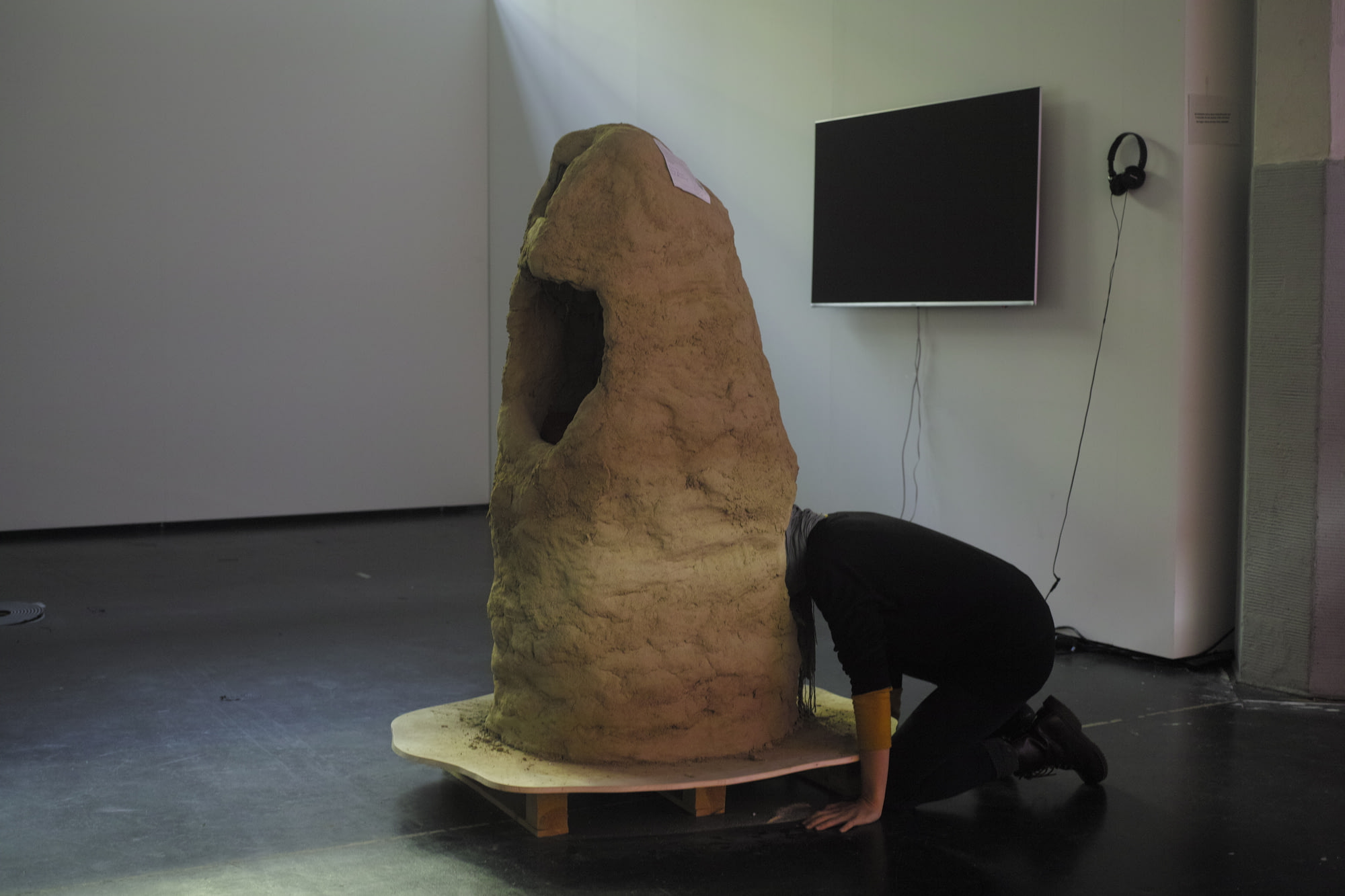I wrote a report on my research called Strategies of Arrival and will mostly reference parts of it in this proposal. This text is a more condensed, concrete version of applying my research results towards the CZ20 exhibition.
The approach I took in my research could be summarized in one sentence:
We need subtle, unannounced changes in bodily experience in order to easily arrive in a new space, in a new relationship to our surroundings
Subtle and unannounced because otherwise the performed actions come into focus. Changes in bodily experience because it is an effective approach to convert a space into a place, convert a piece of architecture into an area brimming with social meaning. By offering performed (by the visitors) or potential (through observing others, imagination or recordings) action, a space is converted into a place in which these particular actions are possible and acceptable, a heterotopia. Museums are heterotopias by definition, however, the character of an exhibition heterotopia can be designed not just through the selection and arrangement of artworks and the classical exhibition design (I’m simplifying here for the sake of the argument) but also through targeted composition of bodily experiences that shape how we arrive in the given heterotopia.
Given the topic of the Critical Zones exhibition my approach to designing bodily experiences of arrival is: promote slight disorientation at first, followed by a ’landing’, a re-articulation in the world. Additionally, I argue that physical interventions by the visitors, the mere presence of the visitors should leave visible traces, countering the feeling that the planet scale processes shown in the exhibition are too huge, that we with our tiny bodies can’t do anything about them.
My proposals could be subdivided into experiences that are guided, unguided, and guided by example.
Guided experiences
Guided experiences are performative approaches that require a museum guide, a trained person or myself in order to be presented to a group of people. Fixed dates or booking ahead of time are needed for such approaches, similar to the classic guided tours or scheduled performances.

I propose the guided experiences of arrival: Zwischenbäume creation: Letting go and destruction: Hitting the tree
While these experiences are announced and booked beforehand, their nominal meaning differs quite a bit from the lived experience, from the effect they have on people.
Unguided experiences

Unguided experiences happen organically, one such thing could be the Soft entry project. I am currently working on a ‘Hard entrance’ variant, where stepping on (and breaking) small twigs, spaghetti, aluminum foil, dry leaves etc. is needed to enter an area of the exhibition. I speculate that the experience of breaking through sheer gravity would make visitors very aware of their bodily presence, of their body and the force and potential violence of their actions.
Experiences guided by example

It takes a bit of courage to actually stick your head into The hiding place or drive around on The reading bike. To overcome the situation of nobody daring to use the items, examples of usage should be visible, either by guides, guards or other people in the know using them; by pictures and videos of the objects being used; by some kind of recording that shows what happened in this place 5 minutes ago (thereby transferring the cultural knowledge of using the items).
These items are auxiliary, they are created for their nullifying effect, the effect of people entering for a moment a third space, a space that is neither the outside world nor the heterotopia of the museum.
These proposals are mostly bound to the exhibition space but additional encounters could be designed, such as:
-
Giving the visitors something to hold unto, a piece of rock, a stick, a 3d-printed exhibition map, a bagel, a piece of wool string, etc. These things ease the process of entering, the long walk towards the entrance of the exhibition. They then can be used within the exhibition as e.g. tools for voting on issues, or for securing the letters of love or dissent (there was a room planned for that at some point).
-
We are all too familiar with the sight of idling museum guards, bored out of their minds. This should be avoided in a Critical Zone exhibition. Instead, museum guards should be encouraged to perform manual tasks they enjoy: to knit, crochet, build Legos, origami, carve wood, make pottery or do any other task that makes them present as a body. Their presence as a body makes it acceptable to visitors to be present as a body.
-
Light changes, sound changes (white noise, anechoic chamber), etc. could be designed specifically for the entrance area.
